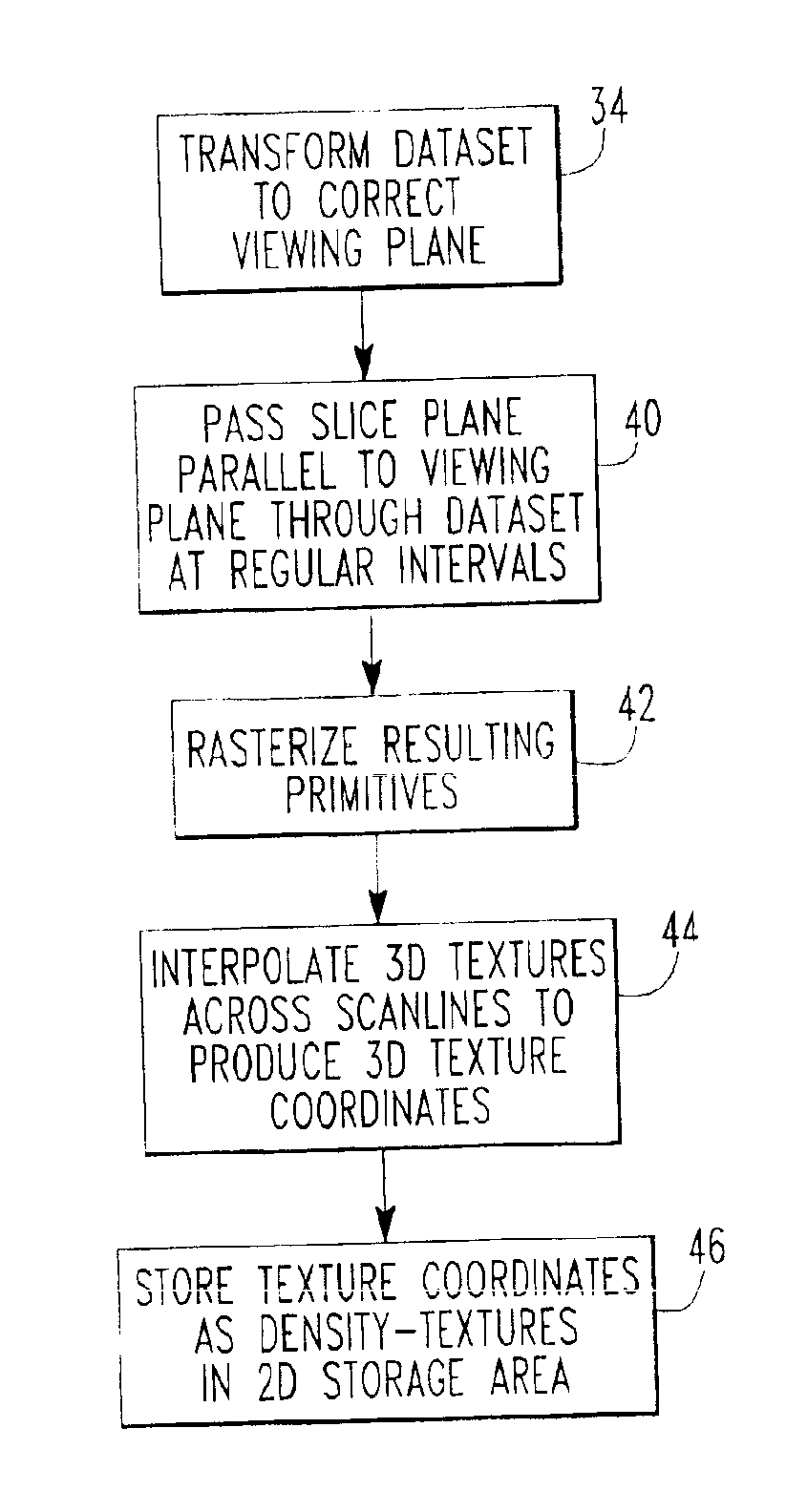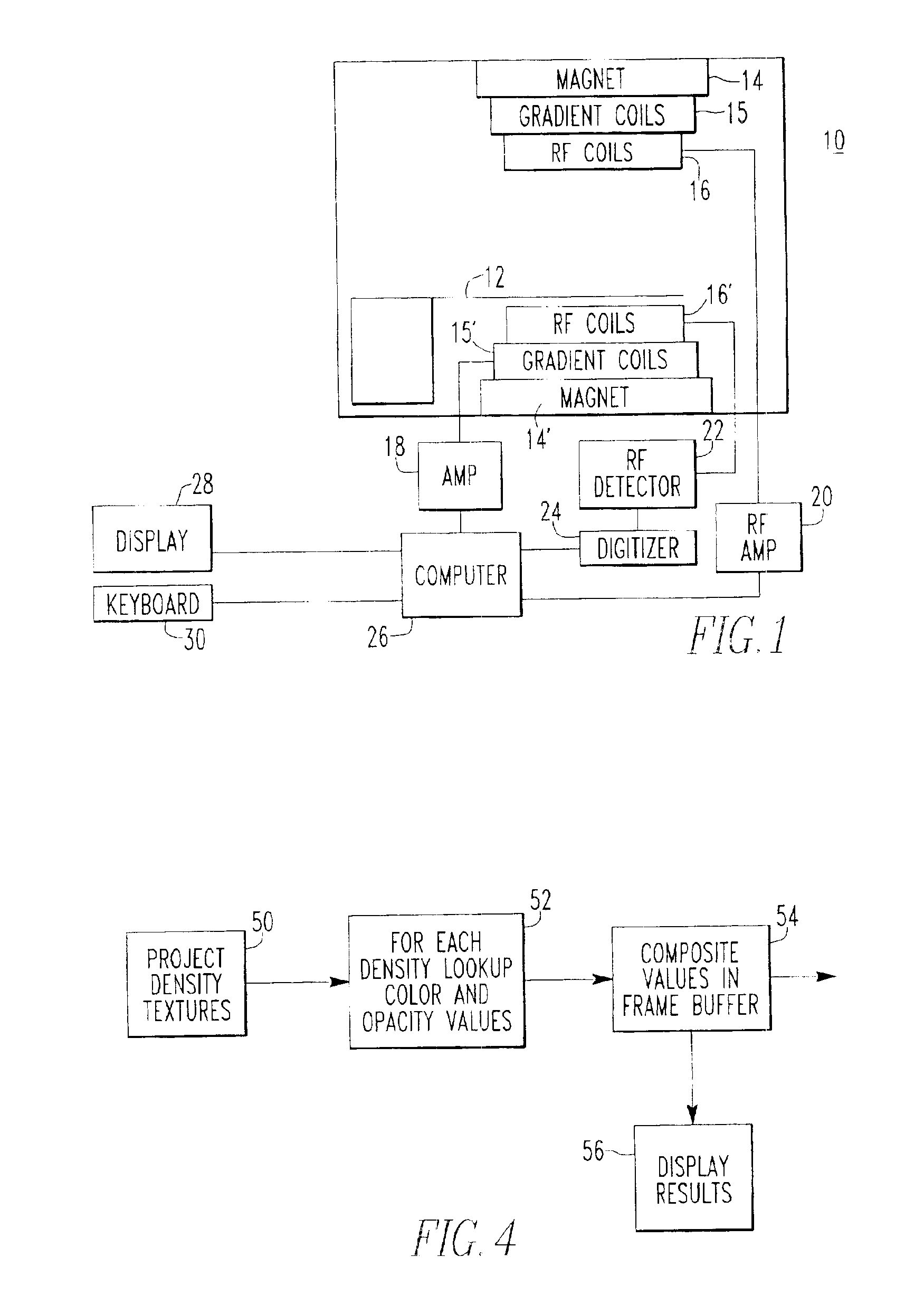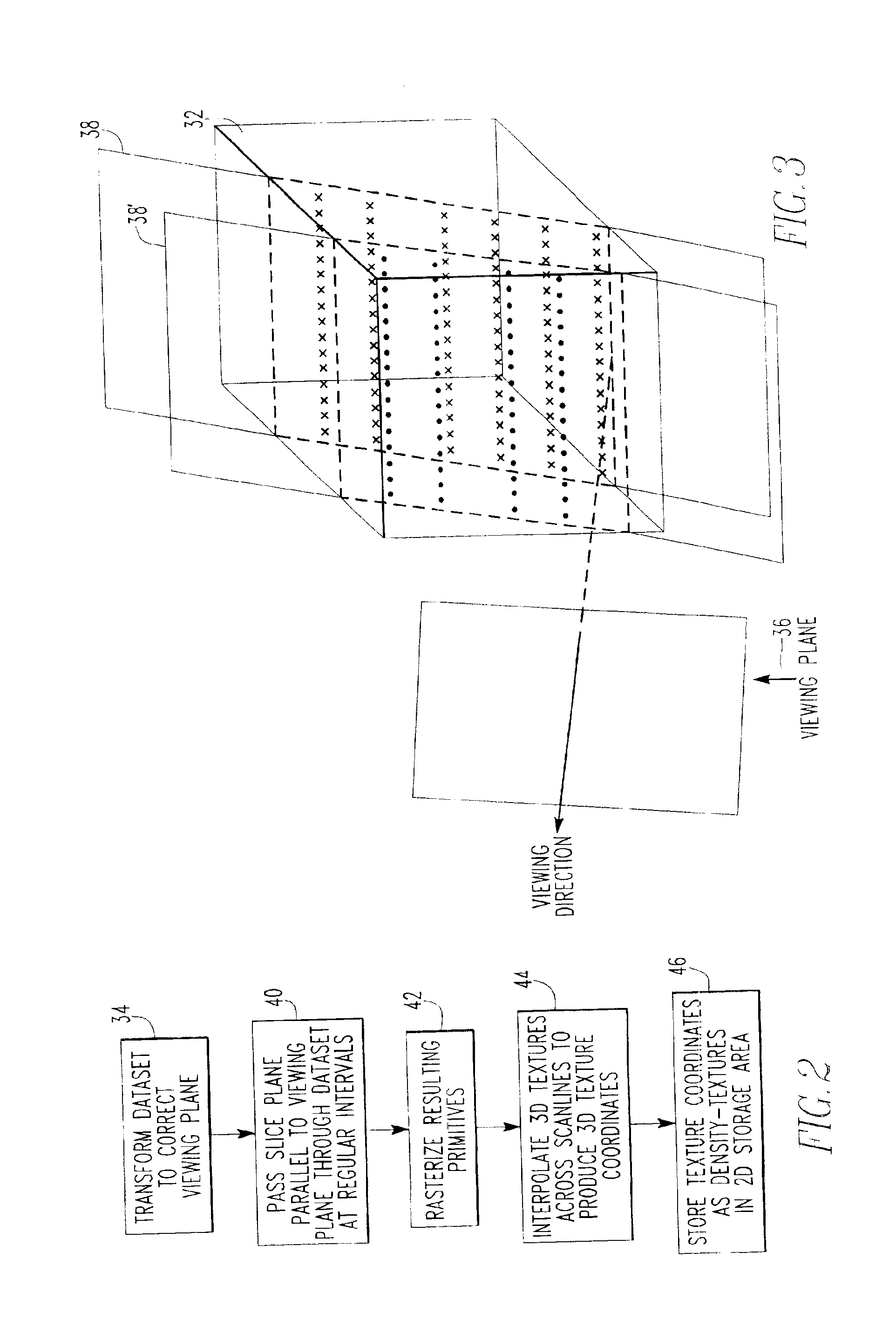Architecture for real-time texture look up's for volume rendering
a volume rendering and texture technology, applied in the field of visualization methods, can solve the problems of inability to see the interior of the volume 3d, inability to obtain new information, and computational costs, and achieve the effects of reducing the burden on available hardware resources, fast texture lookup updates, and efficient software data structur
- Summary
- Abstract
- Description
- Claims
- Application Information
AI Technical Summary
Benefits of technology
Problems solved by technology
Method used
Image
Examples
Embodiment Construction
The present invention addresses the problem of interactive updates to texture lookup tables that are defined for volumetric datasets which in turn enables real-time updates to the rendered volumetric image. Volume datasets are scalar or vector density fields defined over a 3D grid. The individual scalar values at each grid point are called a voxel. As mentioned, volume datasets are available from many different sources such as medical scanners (MRI and CT), spectrum analyzers, laser stripe triangulators, and from various types of computations such as finite element analyses. By interactive and real-time updates I mean the update of the lookup table with a new set of color and opacity values that would result in a re-rendered volumetric image at rates that are fast enough for the user to perceive little or no lag between the inception of the update and the actual refresh of the rendered image.
The present invention will now be described in connection with an MRI apparatus 10 illustrat...
PUM
 Login to View More
Login to View More Abstract
Description
Claims
Application Information
 Login to View More
Login to View More - R&D
- Intellectual Property
- Life Sciences
- Materials
- Tech Scout
- Unparalleled Data Quality
- Higher Quality Content
- 60% Fewer Hallucinations
Browse by: Latest US Patents, China's latest patents, Technical Efficacy Thesaurus, Application Domain, Technology Topic, Popular Technical Reports.
© 2025 PatSnap. All rights reserved.Legal|Privacy policy|Modern Slavery Act Transparency Statement|Sitemap|About US| Contact US: help@patsnap.com



